This paper again demonstrates that in the area of the Majes Rock Art Style (Arequipa; southern Peru) many sites are firmly and ritually connected with at least one of the Sacred Mountains (the Apus) of the area. Those volcanoes play an important role in selecting spots for rock art production. La Caldera is one of those sites.
By Maarten van Hoek
*
The Road to Apu Misti
The Rock Art of La Caldera, Southern Peru
Maarten van Hoek
*
Introduction
The rock art site of La Caldera (Hostnig 2003: 49) is special for several reasons. Firstly, according to Adán Umire Álvarez (2015) the site is known since 1804 (and perhaps even earlier, so he wrote) and thus it is one of the rock art sites in the Desert Andes of South America that is known for more than two centuries. Since then the site has been mentioned, described, discussed and/or illustrated by several authors, for example in 1864 by Antonio Raimondi (Figure 1). In order to avoid unnecessary repetition, I hereby refer to the details in the extensive publication of Adán Umire Álvarez (2015). As a consequence the site is known by no less than nine names: La Caldera; Alto de La Caldera; La Caldera del Diablo; Quillcasca; Quellcasca; Kilkasca; Las Campanas del Diablo; La Biblioteca del Diablo; Quishuarani and Corralones (the name of the ruins of one of the ancient “tambos” – resting places – along the route). Despite its remote and hard to reach location the site is frequently visited by tourists (locals and foreigners alike). However, I must emphasise that my wife and I have never visited La Caldera. Our plans to visit the site in 2016 failed because of the most uncooperative attitude of people in Arequipa with whom we made definitive arrangements from the Netherlands.
Figure 1. Drawing of the outcrop ridge (Panels CAL-005 etc) at La Caldera 5 by Antonio Raimondi. From: Libreta de Viaje N.° 35, 1864. Archivo General de la Nación, Lima, Perú. In: Villacorta Ostolaza (2018).
Click on any image to see an enlargement. Click on the enlargement to return to the TRACCE web page.
Secondly, La Caldera is a typical example of a borderline site. It is located at the very eastern periphery of the Majes Rock Art Group; a rock art region that stretches from the valley of the Río Caravelí in the west of the Department Arequipa to the drainage of the Río Vítor in the east (Area A in Figure 2). It is also found at the western perimeter of the Yarabamba Rock Art Region (Area B in Figure 2), the centre of which is found at the rock art site of San Antonio, some 22 km to the SE of the city of Arequipa in southern Peru (Van Hoek 2017).
The two rock art regions overlap in places (Area C in Figure 2) and are connected via an ancient road, called El Camino Real, along which a number of rock art sites are located, gathered in this study under the generic name of La Caldera. Unfortunately, there does not exist an inventory labelling each site (whether comprising only one panel or numerous panels) and therefore the exact locations of several sites are unknown to me.
The major site (La Caldera 5) is located at 2110 m asl, only 1.6 km south and 12 km east of the Río Vítor-Chili, 70 km inland and 24 km WSW of the city of Arequipa (not 38 km to the north, as stated by De Rivero and De Tschudi [1851: 101]). The location of the Camino Real at La Caldera as indicated by Cordona Rosas (2015: page 70) is also incorrect as the route ran immediately north of the east-west running Cerro la Caldera, not to the south of it.
Figure 2. Map showing the location of La Caldera in the contact zone (C) of the Majes Rock Art Group (A) and the Yarabamba Rock Art Group (B). The green quare indicates the site of San Antonio. Drawing © by Maarten van Hoek, based on OpenStreetMap – Contributors.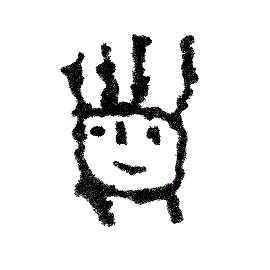
Destroying the Road to Apu Misti?
Unfortunately, the precise location of La Caldera triggered an unexpected and unwanted situation. Because its location is known for more than two hundred years, it should have been fully documented by now. Regrettably, this is not the case and therefore this study and also all other earlier publications only offer the very minimum of what ever has been manufactured at this complex. This incomplete study and all earlier publications by others already confirm the importance of the rock art sites along the Casmino Real and especially of La Caldera 5. But a full scientific study would even more establish the enormous importance of this Sacred Site and all other archaeological sites along the Camino Real. However, even without a full inventory it cannot be denied that the Camino Real and its concatenation of Sacred (rock art) Sites are of enormous cultural importance. This complex of archaeological sites forms a vital part of the fascinating Andean legacy. Most importantly, the spiritual connection of La Caldera 5 with the Sacred Mountains of the area (Apus Misti and Chachani) is of enormous religious significance, as will be demonstrated in this study. This invisible, spiritual connection is called “The Road to Apu Misti” in this study, which is now threatened by obliteration. Therefore, the whole complex should be respected and officially protected and preserved for the future.
The absurdity is now that all local, regional and national authorities must have been aware of the importance of this stretch of ancient Peru, even without having a full inventory available. And yet it was decided to construct a new highway between the city of Arequipa and La Joya (leading on to the Pan-American Sur), which would run from a spot near Arequipa’s airport across the Río Chili via the Camino Real and right across the rock art site of La Caldera 5 (Figure 3B). The first stretch – which started in 2005 – is finished now (red lines in Figure 3). One also started the construction of a bridge across the canyon of the Río Chili and already made much “progress” on the south side of the canyon (yellow line[s] in Figure 3A).
Figure 3. The location of rock art sites (yellow frames) in relation to the construction of the new highway between Arequipa and the Pan Americana Sur (via La Joya). Sites 1 to 6: La Caldera 1 to 6; 7: Puente de Arena; 8: Mollebaya Chico. Maps © by Maarten van Hoek, based on Google Earth.
Not only would this highway destroy much of the cultural landscape, especially the many access roads and other activities that are “necessary” to construct the highway already have destroyed a large part of the landscape and will destroy the complex further if it would be continued. In Google Earth the destruction is clearly visible. It already reached and mutilated the area around La Caldera 3 (the ancient Tambo Corralones) and La Caldera 4. Fortunately, in 2018 the construction of the bridge across the Río Chili and the part of the highway between the bridge and La Caldera was stopped. But if the original plans would be restarted, also La Caldera 5 would be largely, if not completely destroyed. If so, it would be a crying shame. Everything should be attempted to stop this shameful destruction permanently.
Fortunately there are signs that the construction of the planned highway was to be stopped because of the importance of the archaeological complex. In a Peruvian newspaper of September 2011 (RPP – Noticias) there was the following message: “El proyecto fue modificado a fin de que no se afecte la zona arqueológica de La Joya, considerada Patrimonio Cultural de la Nación”, which translates: “The project was modified so that the archaeological zone of La Joya, considered Cultural Heritage of the Nation, is not affected”. However, the newspaper also informed the readers that “a tunnel will be built under this protected archaeological site, which will have signboard and respective protection to encourage tourism in the area”. It seems that this tunnel will indeed run exactly under La Caldera 5. If so, also this alternative is completely unacceptable. Besides that, more tourism will trigger more vandalism at this remote (and most likely unsupervised) site. Up to now (2022) it seems that the “most expensive highway-section of Peru” (only 40% realised of a highway leading nowhere) will never be finished. I hope that this study will further alarm all archaeologists concerned and all authorities involved, and that this highway will never be finished.
The Camino Real is perhaps better known as being part of Qhapaq Ñan, the ancient Inca network of roads across the Andes. It is however a fact that Incas often used existing roads and incorporated them in their own network. It is certain that also the Camino Real at La Caldera already was in use long before the Inca arrived in this part of the Andes.
The exact number of rock art sites along the Camino Real (in this study roughly the 17 km stretch from Uchumayo to La Joya) is unknown to me, but I estimate it to be more than ten, “starting” at the rock art sites of Uchumayo and Mollebaya Chico on the north bank of the Río Vítor, crossing the Río Chili (for an impression see Cardona Rosas 2015: 73) and then (literally) continuing across the “Bridge of Sand” and via the isolated decorated boulder at Puente de Arena to the major site of La Caldera and on to La Joya via some lesser sites (often with only one decorated panel). Adán Umire Álvarez listed five rock art sites along the Camino Real, which he labelled La Caldera 1 to 5 (2015: Figs 5 and 8). Sites La Caldera 1 and 2 only comprise boulders with cupules (respectively with 2 and 5 boulders). These boulders will not be included into the discussion here. Sites La Caldera 3 and 4 are only very briefly mentioned by him and none of the petroglyphs at those sites has been illustrated in his paper. For that reason they cannot be included here either. The focus is (as usual) on the major site: La Caldera 5, which is found immediately north of the Camino Real on the south facing slope of a hill that is literally littered with boulders and some outcrops, most of them not decorated.
Although I never visited La Caldera, based on my photographic record of more than 250 decorated panels along the Camino Real, I propose to add a sixth site (La Caldera 6), which is located immediately south of the Camino Real and opposite La Caldera 5 (Figure 4). At La Caldera 6 there are possibly up to eighteen panels (previously undescribed [?], see however Ponce del Castillo 2014) with petroglyphs (labelled CAL-129, 132 to 136, 145 and 180 by me, plus some nine more unnumbered decorated panels of which the petroglyphs are almost indistinguishable). Unfortunately the photos of Caldera 6 that I have available are not very clear and therefore only some of the images on those panels will – with some hesitation – be included into the discussion.
Figure 4. The location of (very approximately) La Caldera 5 (may extend further east) and La Caldera 6. Map © by Maarten van Hoek, based on Google Earth.
Because an official scientific survey has never been carried out at La Caldera, there does not exist a numbering system either. For that reason I introduce my own system of numbering, in which all panels are labelled CAL-001 etc. (in case of boulders known to have more than one panel, the capital letters A, B etc. will be added, for instance CAL-049A and B). This numbering system also includes panels that are not found at Caldera 5, but at other sites along the Camino Real as well.
*
The Number of Panels and Petroglyphs at La Caldera
When an official scientific survey is lacking, it is understandable that there often arises confusion about the number of decorated panels, especially at a rock art site like La Caldera. One of the problems at La Caldera is that much of the area is covered with white sands, consisting of the ashes of one or two of the “nearby” volcanoes. Those white ashes are easily transported by the wind and often cover parts of the decorated panels, especially at La Caldera 5. It is even possible that some decorated boulders are completely covered and have never been seen. For instance David Forbes illustrates a few panels (1870: for instance Plates XXII-3, 6 and XXIII-3, 4 and 6) that I cannot retrace in my photographic record. For those reasons a complete inventory of what prehistoric people once manufactured on the rock surfaces along the Camino Real does not exist and it will be even extremely difficult to realise such an inventory in the future.
A second problem regarding statistics is the use of the word “petroglifo” in publications by Peruvian archaeologists. In several cases it proves that – despite the use of the singular – the term “petroglifo” refers to a decorated panel, which may in fact have numerous images. This is for instance the case with the remarks by Augusto Cardona Rosas about decorated panels at La Caldera (2002: 155, 156). In my studies a “petroglyph” always refers to one image, not to the whole decorated panel. Added to this issue is that – as far as I know – not a single researcher distinguished between boulders and outcrops. La Caldera 5 comprises a mixture of (mainly) boulders (several with two or more panels) and some outcrop panels. Finally, especially at La Caldera it is often very hard or even impossible to separate the individual images and other anthropic grooves because of being too closely packed and/or being superimposed. Also, fully patinated petroglyphs are easily overlooked. The prehistoric petroglyphs have been made by pecking the rather hard, deeply patinated surface of the granite boulders, but it seems that petroglyphs may have been pre-incised to sketch the layout and then finished afterwards by pecking. This is for instance evident in the square, dented bicephalic snake-like creature on CAL-002 (see yellow, smaller arrow in Figure 14). Finally, many decorated panels are severely eroded (by the sand-laden wind) and weathered (by the fluctuating temperatures and intense solar radiation of the desert) and as a consequence surfaces are often partially exfoliated.
Another problem is that different researchers use different site labels. Umire Álvarez (2015) used the labels La Caldera 1 to 5 and he clearly marked those five sites on two Google Earth maps in his publication. No confusion at this point. Confusingly, Walter Ponce del Castillo (2014) distinguished three locales at La Caldera (Primer, Segundo and Tercer Repositorio). Unfortunately, the (puzzling) coordinates he supplied could not be used in Google Earth and his descriptions of the three sites were not very helpful either, lacking a clear map. Moreover, Ponce del Castillo claimed that the Primer Repositorio has 100 “petroglifos”, the Segundo Repositorio had 30 “petroglifos” and the Tercer Repositorio (most likely La Caldera 5) was said to have 500 “petroglifos”; thus representing a total of more than 600 “petroglifos” at La Caldera. It seems unlikely that Ponce del Castillo meant panels, although – according to Umire Álvarez – it seems that archaeologist Eloy Linares Málaga also estimated the number of boulders to be 500 “bloques” (Linares 1990: 43; in: Umire Álvarez 2015). But the information published by Linares Málaga is not always reliable. For instance, Panel CAL-175 at La Caldera 5 is incorrectly captioned by him as “Petroglifo de Gayalopo – Estilos Paralelos – Distrito de Quequeña” (Linares Málaga 2004: 31-3), which is in fact a rock art site in the Yarabamba Valley, 35 km ESE of La Caldera.
A more realistic number of 265 panels/boulders is offered by Washington Cano (1919: 842 – 843; in: Umire Álvarez 2015). Based on the photographic record that I have available I know that a minimum of 256 decorated panels (on boulders and some outcrops) has been recorded along the Camino Real (excluding Mollebaya Chico). Therefore, I estimate the number of decorated panels found along the Camino Real to be more than 300. Finally it must be mentioned that only an extremely small fraction of the rock panels available along the Camino Real was used for rock art production, also at La Caldera 5, where some decorated panels are found on the road, while the majority is found rather close to and just north of the ancient road.
As far as I know none of the researchers who visited La Caldera ever published a map indicating the location of the decorated panels at La Caldera 5. Therefore, based on the photographic record that I have available, I attempted to create a map of a large number of decorated panels at La Caldera 5 only. The numbering on this map reflects the order in which I gained access to the many photos that I have of all rock art sites along the Camino Real, Boulder CAL-001 being the first decorated panel, which I noticed in the website of CIARQ, which was published in 2002 by archaeologist Cardona Rosas from Arequipa. Scanning the map, it seems that the selection of the panels for rock art production is unplanned. The different motifs seem to be distributed randomly across the site. However, this study will demonstrate that the distribution of some of the images at La Caldera 5 is not completely random.
Figure 5. The estimated location of a large number of decorated panels at La Caldera 5. Red circles: Petroglyphs of the “Venus Cross”; green circles: Petroglyphs of “Trophy” Heads. Map © by Maarten van Hoek.
This map (Figure 5) only (very!) approximately indicates the locations of the panels as numbered by me. Distances between the panels may be inaccurate (greater or lesser) and the bearing from one panel to another may be imprecise as well. Yet, the map offers some reliable information about the position of a large number of panels. When mentioning, describing or illustrating a panel that has been indicated on this map the number will be written in bold.
*
Contextualising La Caldera 5
It is certain that every rock art site in this area was selected for one or more specific reasons. First of all, (most of the?) sites are located directly along and thus related to the important prehistoric (pre-Inca!) road; perhaps the major reason to find rock art there. Moreover, I am convinced that especially La Caldera 5 was also selected for rock art production because of the physical properties of the site. It is important that most of the petroglyphs are found on rock panels that have a deeply patinated, red-brown colour. A freshly produced and thus whiteish image would stand out very clearly against the dark-red background. In my opinion the general red-white contrast forms part of the concept of duality, which is important in Andean worldview (Van Hoek 2013, 2015a). For the same reason it is also significant that – especially at La Caldera 5 – the dark-red boulders contrast sharply with the intense white sands that cover the area. This is especially the case when the low sun illuminates the red boulders in such a way that the whole area seems to be on fire; hence the alternative name for this site: La Caldera del Diablo. Perhaps the duality formed by the solid, immovable boulders and the restless drifting sands was also important.
There is however another, most important spiritual reason which triggered the production of specific imagery at many sites in Arequipa, also at La Caldera 5 (and perhaps including La Caldera 3, 4 and 6). From most of the decorated panels at La Caldera 5 there are uninterrupted views of (the summits of) two of the most important Andean Apus, the volcanoes of Chachani and – above all – Misti. Volcanoes in this area are all Sacred Mountains in Andean worldview (it concerns the volcanoes Pichu Pichu, Misti, Chachani, Ampato, Coropuna, Solimana and Sarasara). I have demonstrated that in this part of Peru many rock art sites are fundamentally linked with the Apus to the north of the rock art region (Van Hoek 2013a, 2018, 2020 and 2021a). I now argue that this invisible, spiritual connection was materialised by the production of specific rock art images, which will be discussed in another section.
 Rock Art Imagery at La Caldera
Rock Art Imagery at La Caldera
It is not my goal to describe every single petroglyph at La Caldera in this study (which would be impossible). Instead I will describe a number of motifs that stand out and/or that are relevant in the scope of this study. However, the numbers presented in this study always represent the very minimum of motifs known to me. There may be or may once have been more petroglyphs.
Most petroglyphs consist of pecked grooves and only very rarely motifs are made in intaglio (for example on Panel CAL-016 [Figure 6: green arrows and inset] and Panel CAL-059) or have been (partially) incised. The number of abstract petroglyphs is enormous and ranges from simple cupules (at La Caldera 1 and 2) to numerous straight and undulating or zigzagging grooves, simple crosses (of prehistoric and/or Colonial origin), circles (with or without a central dot or cross) and other shapes that are mainly randomly arranged across the panels.
Figure 6. Boulder CAL-016. A: Photographs © by Andaray¸ Grupo de Excursionismo – Arequipa. B: Drawing © by Maarten van Hoek, based on an (inaccurate; rotated?) drawing by Linares Málaga (1973. In: 2013: Fig. 18).
*
ABSTRACT MOTIFS
Several grooves form patterns, especially nested zigzags (symbolising snakes or water?), which are found on Panels CAL-058, 103, 175 and 146. Panel CAL-103 may have been disturbed as it has been illustrated in a recumbent (horizontal – original?) position by Linares Málaga (1999: 53: Lámina 4C) (Figure 7A), while at the moment it seems to be in a vertical and tilted position. Patterns similar to the nested zigzags occur in the Yarabamba Rock Art Region, for instance at Gayalopo, Curlaca and San Antonio. The impressive Zigzag-Stripe patterns that are so characteristic for Toro Muerto in the Majes Valley do not – as far as I know – occur at La Caldera or anywhere else along the Camino Real.
Figure 7. Boulder CAL-103. A: Drawing © by Maarten van Hoek, based on a (rotated?) drawing by Linares Málaga (1973. In: 2013: Fig. 17). B: Photograph © by Andaray, Grupo de Excursionismo – Arequipa.
Several cross-shaped motifs at La Caldera are special. Two motifs seem to depict a Swastika Cross (one on Panel CAL-025 [often covered by white sands] and perhaps an imperfect example on Panel CAL-033). Another special cross symbol is the so called “Venus Cross”, which occurs on Panels CAL-036A (yellow frame in Figure 8A), 070, 092 (Figure 8B) and 097, while a faint example may sit on Panel CAL-017. Petroglyphs and even pictographs of the “Venus Cross” are found in many parts of the world, but are also found at “nearby: for instance at Mollebaya Chico (6 km to the ENE; see Figures 8 and 23 for location) and Quilcapampa (40 km to the NE). Four small, outlined triangles (each with a central dot) on Panel CAL-080 are joined by their apexes, thus forming a unique cross symbol; the only petroglyph on this large boulder.
Figure 8. A: Boulder CAL-036. B: Boulder CAL-092. Photographs © by Andaray, Grupo de Excursionismo – Arequipa.
Also occurring are several solar or stellar symbols. They range from simple motifs to most complex examples, like the petroglyphs on Panels CAL-035A (Figure 9), 090 and 116 (the solar symbol on Panel CAL-116 is found combined with at least five zoomorphs of the Majes Rock Art Style).
Figure 9. A: Panel CAL-035A. B: Panel CAL-035B. Photographs © by Andaray, Grupo de Excursionismo – Arequipa.
Some nonfigurative symbols may not be abstract after all. One design on north facing Panel CAL-042B might represent a tree and may be compared with a similar, yet anthropomorphic design on Boulder MIN-074 at Miculla in the far south of Peru. Another special motif is found twice on Panel CAL-184 (possibly located quite a distance WSW of La Caldera 5). It may either represent an “Insignia Tumi” (for details see Van Hoek 2016a and 2017) or even an isolated snake-head (which will be explained further on). Other “abstract” petroglyphs may possibly depict phytomorphs, like the example on Panel CAL-086.
Figure 10. A: Panel CAL-022. B: Panel CAL-027. C: Panel CAL-038. Photographs © by Andaray, Grupo de Excursionismo – Arequipa.
At La Caldera 5 there are two combinations of seemingly abstract motifs and in one case (on Panel CAL-022) a zoomorph and in another case (on Panel CAL-027) an anthropomorph (?). In case of the zoomorph four arrow-shaped motifs seem to aim at the animal (Figure 10A), while in case of the purported anthropomorph at least eight arrow-shaped motifs seem to be bounced back from the anthropomorphic figure (Figure 10B). On Panel CAL-038 a quadruped (most likely a deer) is surrounded by four simple cross-marks (Figure 10C), perhaps expressing the same (still enigmatic) symbolism.
*
ZOOMORPHS
It will be no surprise that quadrupeds are the most frequently depicted zoomorphs on panels along the Camino Real. In most cases it concerns camelids (one camelid – on Panel CAL-185 possibly located somewhere along the Camino Real west of La Caldera 5 – is even held on leash by an anthropomorphic figure). Some petroglyphs of (simple) camelids are found in a rotated position, for example on Panel CAL-063, located almost on the Camino Real, which might indicate that the boulder has been disturbed.
Although most examples comprise rather simple match-stick figures (possibly reflecting the influence from the Yarabamba Rock Art Style), some outlined petroglyphs clearly depict quadrupeds from the Majes Rock Art Style (MRAS), including some examples of Majes Style camelids, felines and foxes and/or dogs (rare at La Caldera; for instance on Panels CAL-107 and 116). Two quadrupeds at La Caldera are “unique” for being depicted with crossed legs (as if running?). They are found on Panel CAL-010, a deer? (Figure 11A; see Van Hoek 2021a: Fig. 36) and (involving a horse with rider?) on Panel CAL-105 (Figure 11B). I know of only one other petroglyph of a quadruped with crossed legs in the area. It is found at Quilcapampa, 39 km to the WNW of La Caldera (Van Hoek 2021a: Fig. 17). There are several other petroglyphs of quadrupeds that seems to have a rider, for instance on Panels CAL-020?, 032 (Figure 11C), 104, 105? and 125 (Figure 11D). At least one comparable animal-and-rider petroglyph is found on Boulder ANT-015 at San Antonio in the Yarabamba Valley, 38 km SE of La Caldera, while another horseman petroglyph (with spear!) is found on Boulder AP3-183 at Alto de Pitis, 75 km to the WNW (Van Hoek 2013b).
Figure 11. A: Panel CAL-010. B: Panel CAL-105. C: Panel CAL-032. D: Panel CAL-125. Photographs © by Andaray, Grupo de Excursionismo – Arequipa.
Also petroglyphs of birds are rare at La Caldera (especially when compared with the rich gamut of bird imagery in the Majes Rock Art Style) and the typical bird imagery of the MSRA (comprising the Rectangular Bird, the Two-Digit-Claw Bird and the Three-Digit-Claw Bird) does not even occur at La Caldera. Bird petroglyphs occur on Panels CAL-015, 027, 036B (see green frame in Figure 8), CAL-054 (see Figure 9A) and CAL-062, while a rather recent example is found on Panel CAL-183 (somewhere along the Camino Real, west of La Caldera 5?) next to a petroglyph of a Cristian Altar-Cross (Figure 12).
Petroglyphs of the Early Christian Altar-Cross are found at more sites along the Camino Real, for instance on Panels CAL-065, 169, 170 and 172 (Figure 12: inset). Also simple Christian crosses occur at several other panels, like the examples on Panel CAL-188, a large boulder also known as the Puente de Arena, which is (was?) located at the east end of the Camino Real (approximately at 16° 25.632’S and 71° 42.712’W; an area now partly destroyed because of the construction of the disputed highway between Arequipa and La Joya; an issue which I discussed in this study earlier). But in several cases Christian crosses are found combined with prehistoric petroglyphs (for instance on Panels CAL-035B [see Figure 9B], 020 and 026, all found at La Caldera 5).
Figure 12. Panel CAL-183. Inset: Panel CAL-072. Photographs © by Andaray, Grupo de Excursionismo – Arequipa.
Paradoxically, petroglyphs of reptiles are both rare and abundant. Rare are images of lizards (possible examples occurring on Panels CAL-120 and 132) and of frogs (one possible example on Panel CAL-075), while petroglyphs of snakes or snake-like petroglyphs are most prolific and characteristic for the area. This general occurrence at La Caldera is in line with the imagery of the Majes Rock Art Style, where snakes occur rather abundantly, while other reptile species are extremely rare or absent.
Indeed, petroglyphs of snake-like creatures are perhaps the most distinguishing feature of the rock art imagery at La Caldera. There are numerous different types, comprising straight lines, zigzag lines, undulating lines, (nested) U-shapes and (elongated) S-shapes. An image may have one single line as a body or – in most cases – it consists of two or even three (parallel) lines. Images of snakes may be monocephalic, but there are many bicephalic petroglyphs of snakes or snake-like creatures at La Caldera. In fact, petroglyphs of bicephalic snake-like creatures only predominate in this area.
Most emblematic are the many petroglyphs of snake-like creatures that have one or two (sometimes interrupted) rows of short, triangular appendages. Most appended triangles are outlined. Those triangles are empty, but sometimes they are bisected by a small line. Occasionally a triangle is fully pecked and in a few cases a number of triangles seem to have been reduced to short, single lines. It might be important that in case of the (unfinished) dented example on Panel CAL-040 there are two flexed, arm-like appendages (or just unfinished triangles?) just below the ⊥-shaped head (Figure 13: inset).
Figure 13. Panel CAL-001. Inset: Panel CAL-040. Photographs © by Andaray, Grupo de Excursionismo – Arequipa.
Also the shape of the snake-head – almost invariably outlined – varies. There are many U-shaped heads, as well as ⊥-shaped heads, while in one case (on Panel CAL-001) a circular, fully pecked (or obliterated?) head has a fin-shaped, backwards projecting appendage at each side (Figure 13: orange arrow). In another case – on Panel CAL-025 – the (⊥-shaped) head of a snake seems to have been deliberately obliterated by a prehistoric manufacturer (Van Hoek 2017: Fig. 27). It may be important to note that deliberate obliteration of petroglyphs is also found in several petroglyphs at Toro Muerto in the Majes Valley, especially in snake petroglyphs (Van Hoek 2005 – 2006). The ⊥-shaped snake head may also have been depicted in isolation (twice), thus without the body of a snake. However, they may as well represent two (outlined) examples of the Insignia Tumi symbol of southern Peru and norther Chile (Van Hoek 2017: Fig. 28).
Interestingly, several petroglyphs at La Caldera seem to represent unfinished snakes, like the examples on Panels CAL-023, 040 (see Figure 13: inset) and CAL-085. Also the oval head of the dented, U-shaped, bicephalic snake petroglyph on Panel CAL-002 seems to be unfinished (Figure 14: yellow, larger arrow; note the partially incised triangle at the lower left corner) and possibly for that reason this oval head was omitted in the very rough sketch by Mariano Eduardo de Rivero and Juan Diego de Tschudi (orange inset in Figure 14),
Figure 14. Panel CAL-002. Photographs © by Andaray, Grupo de Excursionismo – Arequipa. Inset: Panel CAL-002 as drawn by Mariano Eduardo de Rivero and Juan Diego de Tschudi (1851; in: Linares Málaga 1973 [2013]: Fig. 21).
Importantly, petroglyphs of dented snake-like creatures link La Caldera with the rock art site of Mollebaya Chico (6 km ENE of La Caldera) where also several, often most impressive examples with U-shaped heads are found (Van Hoek 2013a: Fig. 59). In the same area (possibly at Mollebaya Grande; a site further downstream the river Chili) is an outcrop panel with a profusion of petroglyphs (Figure 15A), including at least three petroglyphs of dented, bicephalic snake-like creatures, again showing the characteristic U-shaped heads.
At Quilcapampa, 40 km NW of La Caldera, are two examples (Van Hoek 2021a: 69), while further west at least eight examples are known to me to have been recorded. One example is found on Boulder AP2-053C at Alto de Pitis, 75 km WNW of La Caldera, while another very large and elaborate bicephalic snake-like creature has been recorded at the remote rock art site of Quebrada Pampa Blanca NNW of Toro Muerto in the Majes Valley (Figure 15B). Six others (not all dented) are found at Chillihuay, 150 km WNW of La Caldera. At least four snakes at Chillihuay have “arms” just behind their U-shaped heads (Figure 15C).
Figure 15. Panel somewhere along the Río Chile. B: Panel at Quebrada Pampa Blanca, Majes drainage. C: Part of a panel at Chillihuay, Ocoña drainage. Drawings A and C © by Maarten van Hoek, both based on photographs by authors who are unknown to me. Photograph © by James Posso.
*
ANTROPOMORPHS
Petroglyphs of anthropomorphs or parts thereof are relatively scarce at La Caldera and often inconspicuous, as most of them comprise rather small match-stick figures (some with a circular, outlined head only). Only very few anthropomorphic petroglyphs are fully pecked, like the example on Panel CAL-148B (which is mostly covered by white sands). Another fully pecked petroglyph – folded across Panels CAL-036A and C (see orange frame in Figure 8) – seems to depict a biomorph (a frontally depicted anthropomorph or an unknown biomorph seen from above?) with four arms and two legs. Having more than four limbs is not impossible in Andean rock art. Also at Quilcapampa in Sihuas a petroglyph of an anthropomorph seems to have six limbs (Van Hoek 2021a: Fig. 25). A biomorphic petroglyph recorded by Yonat Amaro at the rock art site of La Capilla (perhaps also known as La Quebrada or Pampilla, located high upon the west bank of the Vítor Valley at 16° 31.823’S and 71° 58.026’W) also shows six outstretched limbs, all ending in three digits.
Yet, there are also some larger, more complex, outlined anthropomorphic figures at La Caldera. One example – on Panel CAL-013A – seems to wear a hat and an unusual dress and may therefore be Post-Colonial (Figure 16A). Also the two anthropomorphic figures (one male; one female) on Panel CAL-166 (immediately east of Panel CAL-065, both located rather high up the slope at La Caldera 5) are clearly Post-Colonial as they are part (together with the usual heart-symbol) of a recently added love message.
Other figures are clearly prehistoric and some even seem to hold (mainly linear) objects. Most interesting is the fully frontally depicted anthropomorphic figure on Panel CAL-035B, which seems to hold an atl-atl (throwing spear) and two (incised?) spears. The figure also has a rather complex set of appendages from the head (see Figure 9B). Also the less sophisticated example on Panel CAL-060 seems to hold a throwing spear. Even simpler is the (fragmented) anthropomorphic figure on Panel CAL-073, which may also hold a throwing spear and perhaps a spear (Figure 16C). Parts of anthropomorphs are very rare at La Caldera. As far as I know only one rectangular petroglyph of a possible isolated head (a mask?) has been recorded on Panel CAL-076 (Figure 16B). Yet there are two important types of images depicting (parts of) anthropomorphs, which will be more fully discussed in next sections: “Carcanchas” and “Trophy” Heads.
Figure 16. A: Panel CAL-013A. B: Panel CAL-076. C: Part of Panel CAL-073. Photographs © by Andaray, Grupo de Excursionismo – Arequipa.
 On the subject of “Carcanchas”
On the subject of “Carcanchas”
It is important to know that “Carcanchas” and “Trophy” Heads are two types of rock art images that define the Majes Rock Art Style. I have discussed the “Carcancha” icon in much detail in my earlier works, to which I hereby refer for more information (Van Hoek 2013a; 2015b; 2018; 2020 and 2021a). Basically, the “Carcancha” is a symbol that expresses the important Andean life-death duality, as it often depicts a skeleton in active poses.
Figure 17: Boulder CAL-028. Photograph © by the Municipalidad Distrital La Joya, Arequipa, courtesy of Mrs. Katherine Solórzano of the Oficina de Imagen Institucional de la Municipalidad de La Joya, Arequipa, Peru. Drawing © by Maarten van Hoek, based on the photo of the Municipalidad de La Joya.
More than a hundred examples of the “Carcancha” icon are known to have been recorded in the Majes Style Rock Art Region (from Caravelí in the west to Vítor in the east [see Figure 2]), with an “overkill” of examples at Alto de Pitis in the Majes Valley. At La Caldera (5?) only one unambiguous example has so far been recorded (on Panel CAL-028; location unfortunately unknown to me; Figure 17), while possibly related examples occur on Panels CAL-026 and 096.
Examples of “Carcancha” petroglyphs are also found at nearby Mollebaya Grande and at Culebrillas (Van Hoek 2013a: Figs 99 to 102; 2016b: Fig. 21), both located in the Vítor-Chili drainage, while further examples are found at Quilcapampa and Quebrada de la Tuna in the Sihuas Valley (actually also part of the Vítor drainage) and further west at sites in Majes, Manga, Ocoña and Caravelí. Only two examples are known to exist within the Yarabamba Rock Art region, at the rock art site of Quebrada Quichihuasi, located about 33 km ESE of La Caldera 5 (Van Hoek 2019: Fig. 49N).
In this study I will especially focus on the petroglyphs at La Caldera depicting “Trophy” Heads. Altogether there are no less than thirteen (possible) examples of a “Trophy” Head at sites located along the Camino Real, while at La Caldera 5 the approximate location of at least seven panels each with one “Trophy” Head is known to me. Those seven panels with “Trophy” Heads have been indicated with green circles in the very rough sketch of the plan of La Caldera 5 (see Figure 5). The “Trophy” Heads of La Caldera 5 will now be more fully discussed.
*
The “Trophy” Heads of La Caldera 5
It proves that there are two groups of panels at La Caldera 5, each comprising only one petroglyph of a “Trophy” Head. Those two groups are separated by approximately 40 metres (mind you, all distances and bearings in this study and in Figure 5 are only very approximate). Moreover, no scales are available. The East Group comprises three panels: CAL-049, CAL-057 and CAL-112; the panels (not the petroglyphs) visible from one another. Disregarding vegetation and possibly covering sands it will be possible to simultaneously view all three examples when looking towards the east from one point.
On the WSW facing, low side-panel of a large boulder (CAL-049) sits a small, semi-circular “Trophy” Head petroglyph with four lines from the “chin” area (representing the hair). It also has facial features; two dots represent the eyes. A rather unusual feature for a “Trophy” Head are the two semi-circles that represent the ears (Figure 18). It has no “hanging cord”, which is often a defining element in recognising a “Trophy” Head.
Figure 18. Boulder CAL-049. Photograph © by Andaray, Grupo de Excursionismo – Arequipa. Inset: Drawing of CAL-112, © by Maarten van Hoek, based on a photo by Yonat Amaro.
Only a dozen meters to the NE is Boulder CAL-057 with three decorated panels. On its WSW facing, vertical surface are a number of petroglyphs, including a rather large “Trophy” Head (indicated by the arrows in Figure 19). It has five (possibly six) parallel lines from the “chin” area. The interior of the head seems to have been obliterated (on purpose?) by crude and random pecking (compare this with the obliterated head of a snake on Panel CAL-025). It therefore may once have had facial features. More importantly, a distinct vertical groove from the top of the image clearly represents the “hanging cord”.
It is remarkable that earlier drawings of this panel do not show this “hanging cord”. Moreover, Linares Málaga commented on a drawing published by David Forbes (Figure 19A) because that drawing of the panel was, and I quote, “no bien descifradas y mal dibujadas por Forbes” (Linares Málaga 2013 [1987]: 626; my emphases), while the drawing by Linares Málaga himself (Figure 19B) – although better – is inaccurate as well, missing the “hanging cord” and the possible obliteration of the face; two important details. Moreover, the artist who drew the panel was not David Forbes, but professor Boeck from Arequipa.
Figure 19. Panel CAL-057A. A: The petroglyphs as drawn by Professor Boeck. B: The same panel as illustrated by Linares Málaga. C: Photograph © by Andaray, Grupo de Excursionismo – Arequipa. Drawings © by Maarten van Hoek, “A” based on a drawing published by David Forbes (1870: 271; Plate XXII – Fig. 2); “B” based on Linares Málaga (1999: 53; Lámina 4C).
Only a short distance to the ESE of Boulder CAL-049 is the much smaller Boulder CAL-112. On its SE facing vertical surface is one petroglyph. It depicts a rather weathered (unfinished?) “Trophy” Head with four parallel lines emerging from the top of the head and two lines from the “chin” area. It is remarkable and rather unusual that the “Trophy” Head features all facial features: two dots representing the eyes and two small lines representing the mouth and nose (see Figure 18: inset).
The West Group comprises four boulders with one “Trophy” Head each: CAL-001, CAL-017, CAL-039 and CAL-068. Panels CAL-001, CAL-017and CAL-068 form a group, the panels of which may be intervisible (this could not be checked in the field). Boulder CAL-039 is an outlier lower down the slope.
Boulder CAL-001 is perhaps the best known decorated panel of the whole of the Camino Real. It is often illustrated, in several publications. Its south facing panel features two large petroglyphs of dented, bicephalic snakes, a small nested U-shape and a small “Trophy” Head with four short, parallel lines from the “chin” area and a distinct T-shaped “hanging cord” (see Figure 13: yellow arrow).
Unfortunately, a drawing of Panel CAL-001 by Linares Málaga (2013 [1987]: Fig. 19) does not show this “Trophy” Head, nor is a “Trophy” Head mentioned by him in the text. Also the otherwise informative publication by Umire Álvarez (2015) does not mention the existence of any “cabeza trofeo” along the Camino Real. This general absence of mentioning and/or illustrating the “Trophy” Head at La Caldera is characteristic for (almost?) every publication (Hostnig 2003: 49). It seems that not a single publication dedicates any attention to the occurrence of this important type of petroglyph at this site. It proves that the impressive, dented snakes too often claim the focus of the researchers.
This “subjectivity” also concerns the “Trophy” Head that is found on Boulder CAL-068, almost adjacent to (west of) Boulder CAL-001. On its south facing, vertical surface is only one recognisable petroglyph. It is a large head comprising two concentric squares with seven parallel lines from the “chin” area and two parallel lines (connected at the top?) that form the “hanging” cord (s?). The curved line inside the head may be a recent addition. So far only Andaray, Grupo de Excursionismo – Arequipa, recognised the importance of this petroglyph and they made a perfect photograph of this “Trophy” Head (Figure 20A).
Figure 20. A: Panel CAL-068. B: Panel CAL-069. C: Panel CAL-064. D: Panel CAL-039B. Photographs © by Andaray, Grupo de Excursionismo – Arequipa.
The same goes for Boulder CAL-017, located a short distance to the SE of CAL-001. The published drawing that I have available (Figure 21B) does not show any “Trophy” Head, neither the faint “Venus” Cross or other petroglyphs on this boulder (Linares Málaga 2013 [1987]: Fig. 25). Why? Because on south facing Panel A is a large, impressive bicephalic, partially dented snake petroglyph, which (understandably) attracted all attention: the focus is – again – on the large snake image. It even seems that photographers favour the snake over the miniature “Trophy” Head (see for instance Umire Álvarez 2015: Fig. 9), which sits on the NE-facing surface of Panel CAL-017B. It is a small, inconspicuous petroglyph of a “Trophy” Head, similar to the example on CAL-001. It has four parallel lines from the “chin” area, two dots representing eyes and a distinct T-shaped “hanging cord”(Figure 21).
Figure 21. Panel CAL-017. A: Photo © by Andaray, Grupo de Excursionismo – Arequipa. B: Drawing © by Maarten van Hoek, based on Linares Málaga (1973 [2013]: Fig. 25).
A similar instance of subjectivity concerns the much smaller Boulder CAL-039, which has two decorated panels. On east sloping and (Misti) facing Panel CAL-039B is a confusion of undulating lines, one of which encloses a small “Trophy” Head with four parallel lines from the “chin” area, one line from each side of the head (the ears?) and one line from the top of the head representing the “hanging” cord (see Figure 20D). Within the head is a rectangular pecked area that could represent facial features. Only Andaray, Grupo de Excursionismo – Arequipa, photographed this panel, while most other people photographed Panel CAL-039A that has an impressive and very distinct dented, bicephalic snake petroglyph (Van Hoek 2015c: Fig. 5).
*
Other “Trophy” Heads along the Camino Real
There are six other petroglyphs of “Trophy” Heads on panels recorded along the Camino Real of which I do not know the location. Two of these – on Panels CAL-064 and 069 – have been photographed by Andaray, Grupo de Excursionismo – Arequipa, and may be located somewhere at La Caldera 5. Panel CAL-064 has a “Trophy” Head similar to the example on Panel CAL-068. It has eight long, parallel lines from the “chin” area and two or three short, parallel lines from the top of the head, topped by a long horizontal line; a rather unusual configuration of the “hanging cord” element. The head (formed by two concentric rectangles) is empty (see Figure 20C). A different layout has the “Trophy” Head on Panel CAL-069. It has two almost heart-shaped concentric lines forming the head, which has two eyes, a mouth and a vertical line bisecting the head (a nose?). Five rather long, parallel lines run from the “chin” area, while two short lines topped by a long, horizontal line form the “hanging cord” (see Figure 20B).
Furthermore, Yonat Amaro, a visitor to La Caldera, photographed a possible “Trophy” Head on Panels CAL-133B and CAL-145 (both located somewhere in or near La Caldera 6) and – at an unknown location – a possibly unfinished example on Panel CAL-097 (together with a “Venus Cross” and a dented snake-like creature). Also at an unknown location is the petroglyph of an unambiguous “Trophy” Head petroglyph on Panel CAL-124A. It has four parallel lines from the “chin” area and a T-shaped “hanging cord”. The face has no facial features.
Figure 22. Panel CAL-067. Photographs © by Andaray, Grupo de Excursionismo – Arequipa.
Finally, Andaray, Grupo de Excursionismo – Arequipa, also photographed a large, low-lying panel (CAL-067; located very close to Boulder CAL-025 and thus most likely found at La Caldera 5) with a collection of petroglyphs (a simple snake, several simple quadrupeds, lines and dots) on its rough upper and side panels (Figure 22). Among those images is one small, match-stick anthropomorphic figure, but also a somewhat larger outlined anthropomorphic figure. It has a triangular body topped by a rectangular head from which two (connected) parallel lines emerge. It also has two legs (one leg shorter than the other [unfinished?]) and two outstretched (yet flexed) arms. It now seems that his right arm (hand) is holding a circular object, which I regard to represent a “Trophy” Head. This configuration may be compared with similar petroglyphs at Rosario in northern Chile (Van Hoek 2010: Fig. 9) and with examples on Boulder TM-Cd-057 at Toro Muerto in Majes (Van Hoek 2010: Fig. 6).
If my interpretation is correct, the anthropomorph on Panel CAL-067 is – so far – the only example of an anthropomorphic “Trophy” Head Carrier in the Vítor-Chili drainage (zoomorphic “Trophy” Head carriers are unknown to me in the Vítor-Chili drainage). Other examples are found at Quilcapampa in Sihuas (Van Hoek 2021a: Fig. 62), Toro Muerto and Quebrada Pampa Blanca in Majes (Van Hoek 2010: Fig. 2; 2018; 2020: Fig. 6), Illomas in Manga (Jennings, Van Hoek et al. 2019: Fig. 25) and at an undisclosed site in the Caravelí drainage (Scaffidi et al. 2021: Fig. 2g).
The examples of the “Trophy” Head with the typical T-shaped “hanging cord” link La Caldera with other drainages. Petroglyphs of “Trophy” Heads with such a T-shaped appendage from the top of the head are found to the west of La Caldera at Cerro Pano (Van Hoek 2010: Fig. 38B), Toro Muerto and Alto de Pitis in Majes, Illomas in Manga, Quilcapampa in Sihuas, at La Cantera in Vítor and – representing an easternmost outlier – at Cerro Verde in the Chili-Yarabamba drainage.
*
Contextualising La Caldera “Trophy” Heads
In several studies I have demonstrated that especially specific life-death related petroglyphs, which are found at many (but definitely not all) sites in the MRAS, function as invisible bridges spanning the rock art site and the four relevant Apu(s) (see Figure 2 for general locations). In case of the rock art site of Alto de Pitis in the Majes Valley the spiritual road from the decorated boulders focusses on Apu Coropuna, which is clearly visible some 80 km to the NNW of the site. From the rock art site of San Antonio in the Yarabamba Valley no less than five Apus are visible: Pichu Pichu, Misti, Chachani, Ampato and (on a good day) Coropuna, while – like La Caldera 5 – also at San Antonio the site is characterised by red boulders in white sands (Van Hoek 2017).
I also demonstrated that factual physical visibility was not even necessary in order to establish the image-Apu connection, while discussing the location of the rock art site of Quilcapampa in the Sihuas Valley, from which Apu Ampato is not visible. None of the Apus is visible from Quilcapampa. However, the intensive surveys of the Proyecto de Investigación Arqueológica Quilcapampa La Antigua at the Quilcapampa Settlement (Jennings et al. 2021) established that the Wari constructed a Raised Plaza in such a way that it incorporated invisible lines from the Plaza that were deliberately aligned onto Apu Coropuna, Apu Ampato and the Apus Misti and Chachani (Van Hoek 2021a: 85 – 87; Fig. 76). In this way the Wari respected the regional tradition to link rock art sites with the Apus of the area, a tradition that originated long before the Wari arrival in Arequipa.
Likewise, Apu Coropuna is not visible from the rock art site of Cíceras (Van Hoek 2021b) and neither from Toro Muerto and Quebrada Pampa Blanca (Van Hoek 2020), while not a single Apu (only 30 km to the NE) is visible from the canyon rock art site of Culebrillas. Yet all those important rock art sites are linked with an Apu and yet all those sites have one or more of the life-death related images: “Carcanchas”, “Trophy” Heads, Mummy Bundles and even some very unusual bird petroglyphs that seem to carry a “trophy” Head across blocking ridges (more details in: Van Hoek 2021a and 2021b).
La Caldera is no exception. The combination of red-white contrasts, the location on an ancient physical road and the visibility of especially Apu Misti – an invisible spiritual road – also triggered the manufacturing of petroglyphs depicting at least one “Carcancha” and especially a relatively large number of “Trophy” Heads. It has been established in this study that Apu Misti is clearly visible from the two groups of panels bearing “Trophy” Heads (Figure 23). It is therefore the more surprising to see that none of the previously published works mention the existence of those two most important types of images at La Caldera. With possibly up to thirteen examples of the “Trophy” Head, La Caldera is among the key sites confirming the existence of invisible, spiritual roads from especially key rock art sites to the Apus.
Figure 23. The location of La Caldera related to Apu Misti. Drawings © by Maarten van Hoek. Map based on OpenStreetMap – Contributors; profile based on Google Earth.
 Dating the Rock Art along the Camino Real
Dating the Rock Art along the Camino Real
Although in general rock art is notoriously difficult to date (especially petroglyphs in harsh desert environments) there are a few indications that may help to at least date a few types of petroglyphs along the Camino Real. Certainly recent are the love messages on Panel CAL-166, while all the Early Christian Crosses (see Figure 12) are definitely Post-Colonial. Probably also Post-Colonial are the rare examples of petroglyphs depicting a rider on a quadruped (a horse?) (see Figure 11). All those images confirm the long ritually charged use of the Camino Real.
The prehistoric images are more difficult to date and only a few tentative clues are available. I would like to suggest that especially the simple match-stick petroglyphs of camelids are not very old. They may date from Wari times on, well into the Inca Period (and possibly they were still manufactured in Post-Colonial times as well). The more complex (outlined) examples of camelids and all other recognisable Majes Rock Art Style images may date from Pre-Wari and Wari periods (but they were definitely not manufactured by the Wari).
Surprisingly there are some types of images that may have been derived from the coastal Formative Period Páracas Culture, which had its heartland some 550 km NW of La Caldera. There are a few types of images in the Majes Rock Art Style that may have a Páracas origin or (more likely) are Páracas influenced (for more details see Van Hoek 2018). They would also be among the oldest images. Yet, also at La Caldera only very few petroglyphs may show Páracas origin/influence. Only a small number of anthropomorphic figures may be important in this respect, especially the examples on Panels CAL-035B (see Figure 9B), CAL-060 (Van Hoek 2021c: Fig. 5B) and CAL-073 (see Figure 16C). Those figures carry linear objects that may involve atlatls (spear-throwers) and/or spears; weapons used (also!) by the Páracas warriors.
The second type of images may provide a more convincing link with Páracas. It concerns the dented, often bicephalic snake-like creatures that are so characteristic for La Caldera. It is uncertain if indeed snakes have been depicted, especially as the U-shaped and ⊥-shaped heads at La Caldera deviate from the “standard” (mainly oval) snake-heads in Majes Rock Art Style. Yet, especially the dented snake-like creature (see Figure 13) may be an icon with a Páracas Tradition antecedent.
Ann Peters (2020) discusses and – more importantly – illustrates a large number of Páracas textiles with depictions of snake-like creatures, both zigzagging and straight-bodied, which almost invariably have (long or short) bodies that have continuous rows of small triangles on both sides, thus creating typical dented figures. Although the heads that are so typical for the La Caldera creatures are not seen in those Páracas textiles, there are enough variations in layout to make it acceptable that the La Caldera creatures are related. Importantly, some of the dented creatures on the Páracas textiles have arms (or forelimbs as Ann Peters calls them) that are positioned directly behind the head (Peters 2020: Fig. 13). This may be compared with similar petroglyphs of dented creatures with flexed (otherwise simple) arms behind the head, like with the dented (unfinished?) creature on Panel CAL-040 (see Figures 13: inset) and at some other sites (see Figures 15B and C). Possibly also the single-line, bicephalic snake (lined with rows of small dots) on Panel CAL-072 represents some sort of a local spin-off (Figure 24).
Figure 24. Panel CAL-072. Photograph © by Andaray, Grupo de Excursionismo – Arequipa.
Finally it is possible that the small, forwards projecting item of the ⊥-shaped head in several snake petroglyphs at La Caldera actually represents the tongue of the creature. If this is true, then this type of head – with protruding tongue – also occurs in the imagery of Páracas textiles (for instance in: Peters 2020: Figs 13a and 16b and c). Some other figures in Páracas textiles (for instance in: Peters 2020: Fig. 16D) may be compared with a few petroglyphs of straight-bodied, bicephalic and dented creatures, for instance on Panel CAL-002 (see Figure 14). Finally, the U-shaped head that is so typical for the snake imagery at La Caldera (and at Mollebaya Chico) does not seem to occur in Páracas iconography as far as I know. Creatures with a U-shaped head may be a local variation (with La Caldera as the spot of origin?) from where it diffused a short distance to the east, re-emerging at Mollebaya Chico and at [?] Mollebaya Grande (see Figure 15A), while to the west of La Caldera petroglyphs of creatures with a U-shaped head have been recorded at Quilcapampa, Alto de Pitis, Quebrada Pampa Blanca (see Figure 15B) and Chillihuay (see Figure 15C). At the extensive rock art site of Illomas in Manga no examples of creatures with a U-shaped head or truly dented snakes have been recorded, only some petroglyphs of snakes with a ⊥-shaped head.
This study definitely established that the rock art along the Camino Real is of great importance to the ancient Andean culture. Not only it spans many hundreds of years (from the Formative Period to the Post-Colonial Period), it also displays a wide array of motifs, ranging from simple dots to most complex biomorphic images. Several of the petroglyphs at La Caldera link the site with especially the imagery of the Majes Rock Art Style (MRAS) further west, while also the Yarabamba Rock Art Style is (more faintly) discernible among the motifs. Remarkable is the relatively large number of snake and snake-like petroglyphs, among which especially dented snakes are noteworthy. Also those dented snake-like creatures (especially those with U-shaped heads) connect La Caldera with sites of the MRAS. Snake-like petroglyphs with ⊥-shaped heads seem to represent more a local variation, yet possibly based on Páracas imagery.
However, this study also firmly authenticates the existence of the most important connection; the spiritual link between many rock art sites and the Apus, the Sacred Mountains of the area. In 2013 I published my theory about the link of the rock art site of Alto de Pitis in the Majes Valley and Apu Coropuna, the highest volcano of Peru, some 80 km to the NNW of Alto de Pitis. Since then my researches could add several other rock art sites that are connected to one or more of the regional Apus. I also argued that physical visibility was not necessary per-se in order to establish a link between rock art and the Apu. This is for instance the case at the rock art site of Cíceras (Van Hoek 2021b), while at Quilcapampa a ritual Wari structure confirmed the alignments with three Apus, even when none of the Apus is visible from the rock art site itself (Van Hoek 2021a).
Thus, the enormous accumulation of petroglyphs at La Caldera (5 and 6) is also explained because of the visibility of Apu Chachani and – above all – Apu Misti. For that reason I have called this study “The Road to Apu Misti”. I moreover argue that – in general – petroglyphs of “Trophy” Heads served as transcendent messengers carrying the souls of the deceased to the top of each Apu, but only in the Majes Rock Art Region (for more information see Van Hoek 2021a). For that reason there is a relatively large number of petroglyphs of “Trophy” Heads at several sites displaying the MRAS, also at La Caldera.
It is therefore a crying shame that there are still plans to resume the construction of the highway from Arequipa, as it will completely destroy not only the Sacred Site of La Caldera (even when a tunnel will be drilled under the site) but also “The Road to Apu Misti” (Figure 25). Therefore, this study also serves as a serious plea to all the authorities involved not to continue the original plans, but to divert the highway in such a way that La Caldara can be safeguarded for the future.
Figure 25. The “Invisible Road from La Caldera to Apu Misti”. Photograph © by Dr. Walter Enrique Ponce del Castillo; docente de la Escuela Profesional de Artes, UNSA, Arequipa, Perú.
Especially because I have never surveyed any rock art site along the Camino Real I am most grateful to several people who shared information and – above all – photographs of rock art along the Camino Real with me. My special thanks goes to Andaray – Grupo de Excursionismo – from Arequipa, Peru who sent me high-quality photographs of numerous rock art panels, many of which have been used in this study. Without their help this study could never have been written. I am also grateful to Sra. Katherine Solórzano of the Oficina de Imagen Institucional de la Municipalidad de La Joya, Arequipa, Peru and Sr. James Posso Sánchez from Arequipa for sharing information and some photos with me, two of which have been used in this study (respectively Figure 17 and 15B). Also Walter Enrique Ponce del Castillo; docente de la Escuela Profesional de Artes, UNSA, Arequipa, Perú was so kind to allow me to reproduce one of his photos (Figure 25). It must be emphasised however that I am the only person who is responsible for all information in this study.
Andaray. Websites: https://andarayaqp.blogspot.com/search?q=petroglifos and https://www.flickr.com/photos/andarayaqp/albums/72157672094143471
Cano, W. 1919. Las ruinas preincaicas de Arequipa. In: Revista Variadades; Notas 3: pp. 842 – 843.
Cardona Rosas, A. 2002. Arqueología de Arequipa: De sus albores a los Incas. Centro de Investigaciones Arqueológicas (CIARQ), Arequipa.
Cardona Rosas, A. 2015. Caminos prehispánicos en Arequipa. In: Arequipa Patrimonio Cultural de la Humanidad. Reflexiones a los quince años de su declaratoria. Pp. 65 – 76. Ministerio de Cultura, Perú.
De Rivero, M. E. and J. D. de Tschudi. 1851. Antigüedades Peruanas. Edit. Imprenta de la Corte del Estado de Viena.
Forbes, D. 1870. On the Aymara Indians of Bolivia and Peru. The Journal of the Ethnological Society of London. Vol. 2-3: pp. 193 – 305. URL.
Hostnig, R. 2003. Arte rupestre del Perú. Inventario Nacional. CONCYTEC, Lima, Perú.
Jennings, J., M. van Hoek, W. Yépez Álvarez, S. Bautista, R. A. San Miguel Fernández and G. Spence-Morrow. 2019. Illomas: the three thousand year history of a rock art site in Southern Peru. Ñawpa Pacha, Journal of Andean Archaeology. Vol. 39 – 2; pp. 1 – 31.
Jennings, J., W. Yépez Álvarez and S. L. Bautista (eds.). 2021. Quilcapampa. A Wari Enclave in Southern Peru. University Press of Florida.
Linares Málaga, E. 1973; re-published 2013. Anotaciones sobre las cuatro modalidades de arte rupestre en Arequipa (pictografías, petroglifos, arte rupestre mobiliar y geoglifos). In: Boletín de APAR-2013. Vol. 4-15/16; pp. 611 – 651. Originally published in: Anales científicos de la Universidad del Centro del Perú. 1973. Vol. 2; pp. 133 – 267. Huancayo.
Peters, A. H. 2020. Two-headed serpents and rayed heads: Precedents and reinterpretations in Paracas Necropolis imagery. In: in Pre-Columbian Textile Conference VIII / Jornadas de Textiles Pre-Colombinos VIII. Editors: Lena Bjerregaard and Ann Peters.
Ponce del Castillo, W. 2014. Petroglifos La Caldera del Diablo. UNSA, Arequipa. URL.
Scaffidi, B. K., G. D. Kamenov, A. E. Sharpe and J. Krigbaum. 2021. Non-Local Enemies or Local Subjects of Violence?: Using Strontium (87Sr/86Sr) and Lead (206Pb/204Pb, 207Pb/204Pb, 208Pb/204Pb) Isobiographies to Reconstruct Geographic Origins and Early Childhood Mobility of Decapitated Male Heads from the Majes Valley, Peru. Journal of Archaeological Method and Theory – https://doi.org/10.1007/s10816-021-09519-5.
Umire Álvarez, A. 2015. Los “listados”: petroglifos del Alto de la Caldera en Arequipa, sur de Perú. In: Rupestreweb.
Van Hoek, M. 2005 – 2006. Toro Muerto, Peru: Possible Prehistoric Deletion of Petroglyph Details. Adoranten – the Journal of The Scandinavian Prehistoric Society – 2005; pp. 73 – 80. Underslös, Sweden. Spanish version available at Rupestreweb: 2006. Toro Muerto, Perú. Posibles alteraciones prehistóricas en detalles de petroglifos.
Van Hoek, M. 2010. ‘Trophy’ heads in the rock art of the Majes Valley, Perú: exploring their possible origin. In: Rupestreweb.
Van Hoek, M. 2013a. The Carcancha and the Apu. Rock Art in the Death Valley of the Andes. Oisterwijk, The Netherlands. Book available at ResearchGate.
Van Hoek, M. 2013b. The Horseman of Alto de Pitis, Peru: A Post-Columbian Outsider in a Pre-Columbian Landscape. Privately published. Available at Academia.
Van Hoek, M. 2015a. Andean Petroglyphs and Yanantin. The Case of El Olivar, Ancash, Peru. In: Rupestreweb.
Van Hoek, M. 2015b. Rare Petroglyphs of Skeleton-Anthropomorphs in Caravelí, Arequipa, Peru. Adoranten – the Journal of The Scandinavian Prehistoric Society – 2014; pp. 88 – 96. Underslös, Sweden.
Van Hoek, M. 2015c. Ananta in Caravelí? Polycephalic Snakes in Desert Andes Rock Art. In: Rupestreweb.
Van Hoek, M. 2016a. The Frontal Insignia-Tumi: A Rare High-Status Object in Desert Andes Rock Art. In: TRACCE – On-line Rock Art Bulletin, Italy. Fully illustrated PDF available at Academia.
Van Hoek, M. 2016b. Sobre Dibujos de Arte Rupestre (Andino). Una Petición Para Sólo Publicar Dibujos Que Son Científicamente Sólidos. In: TRACCE – On-line Rock Art Bulletin, Italy.
Van Hoek, M. 2017. Petroglifos en Yarabamba, Arequipa, Perú: ¿Aplacandos los Apus? In: TRACCE – On-Line Rock Art Bulletin, Italy.
Van Hoek, M. 2018. Formative Period Rock Art in Arequipa, Peru. An up-dated analysis of the rock art from Caravelí to Vítor. Oisterwijk, Holland. Book only available at ResearchGate.
Van Hoek, M. 2019. The Book of Bones – ‘Carcanchas’ in Global Rock Art. Oisterwijk, Holland. Book available at ResearchGate.
Van Hoek M. 2020. New “Carcancha” Petroglyphs in Arequipa, Peru. Illustrating the “Road to Coropuna”. In: TRACCE – Online Rock Art Bulletin, Italy.
Van Hoek, M. 2021a. Accessing the Inaccessible. Rock Art of Quilcapampa, southern Peru. Oisterwijk, the Netherlands. Book only available at ResearchGate.
Van Hoek, M. 2021b. The Cíceras “Carcancha-Bird” Petroglyphs, Majes, Peru. In: TRACCE – Online Rock Art Bulletin, Italy.
Van Hoek, M. 2021c. War and Weapons in Majes Style Rock Art? In: TRACCE – Online Rock Art Bulletin, Italy.
Villacorta Ostolaza, L. F. 2018. Tesoros de Arequipa. La Huella de Antonio Raimondi. Museo Raimondi, Lima.
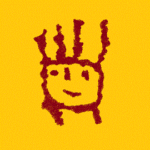
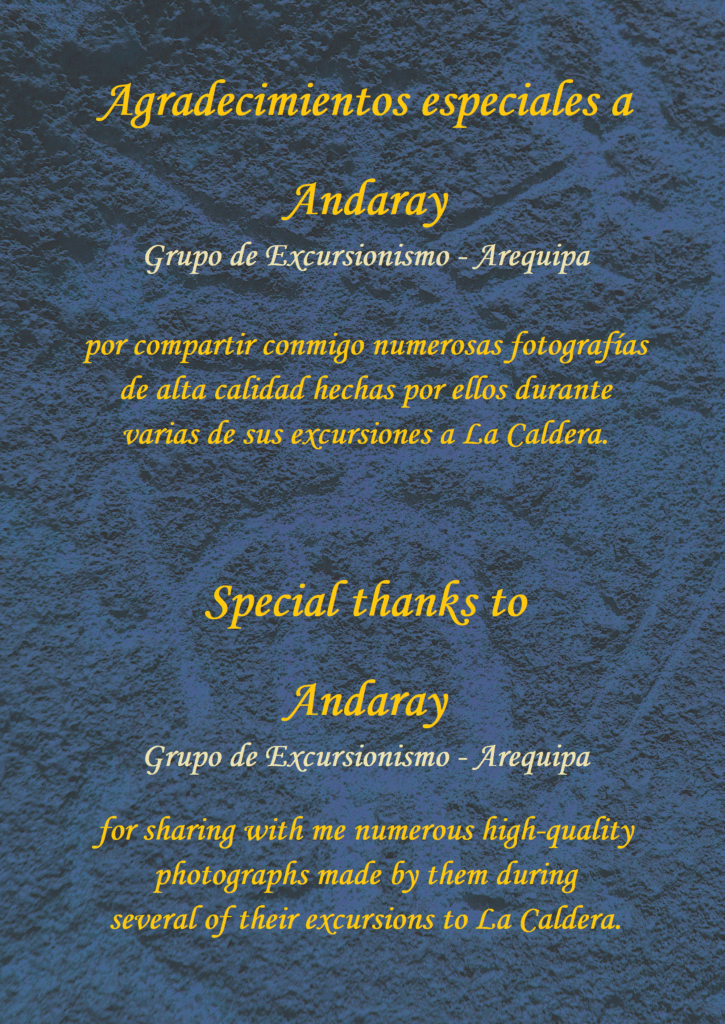
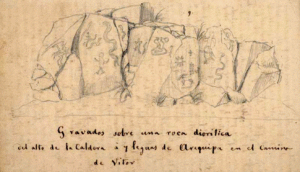
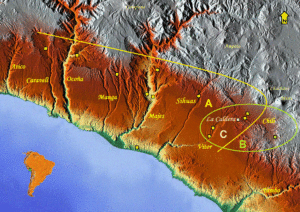

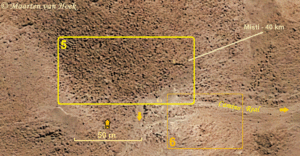
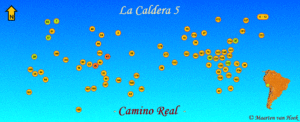
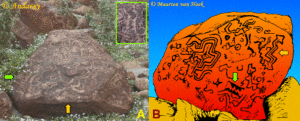
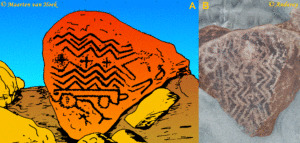
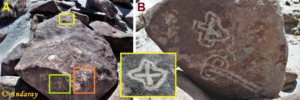
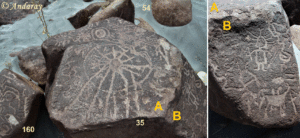


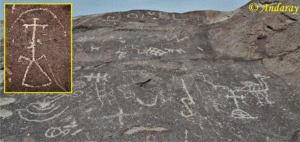
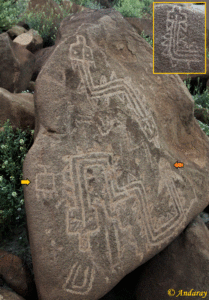



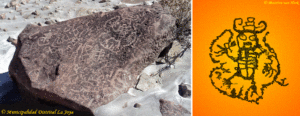
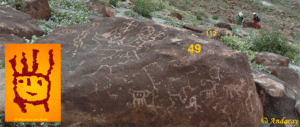
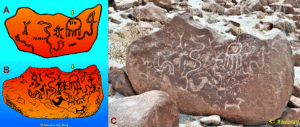

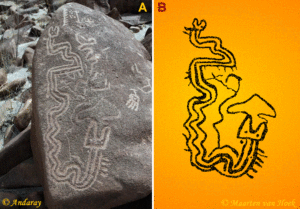
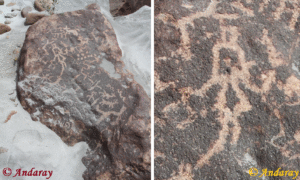
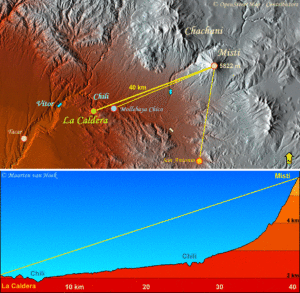
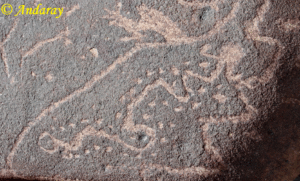
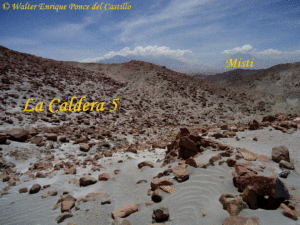
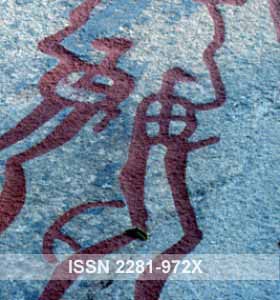













Leave a Reply